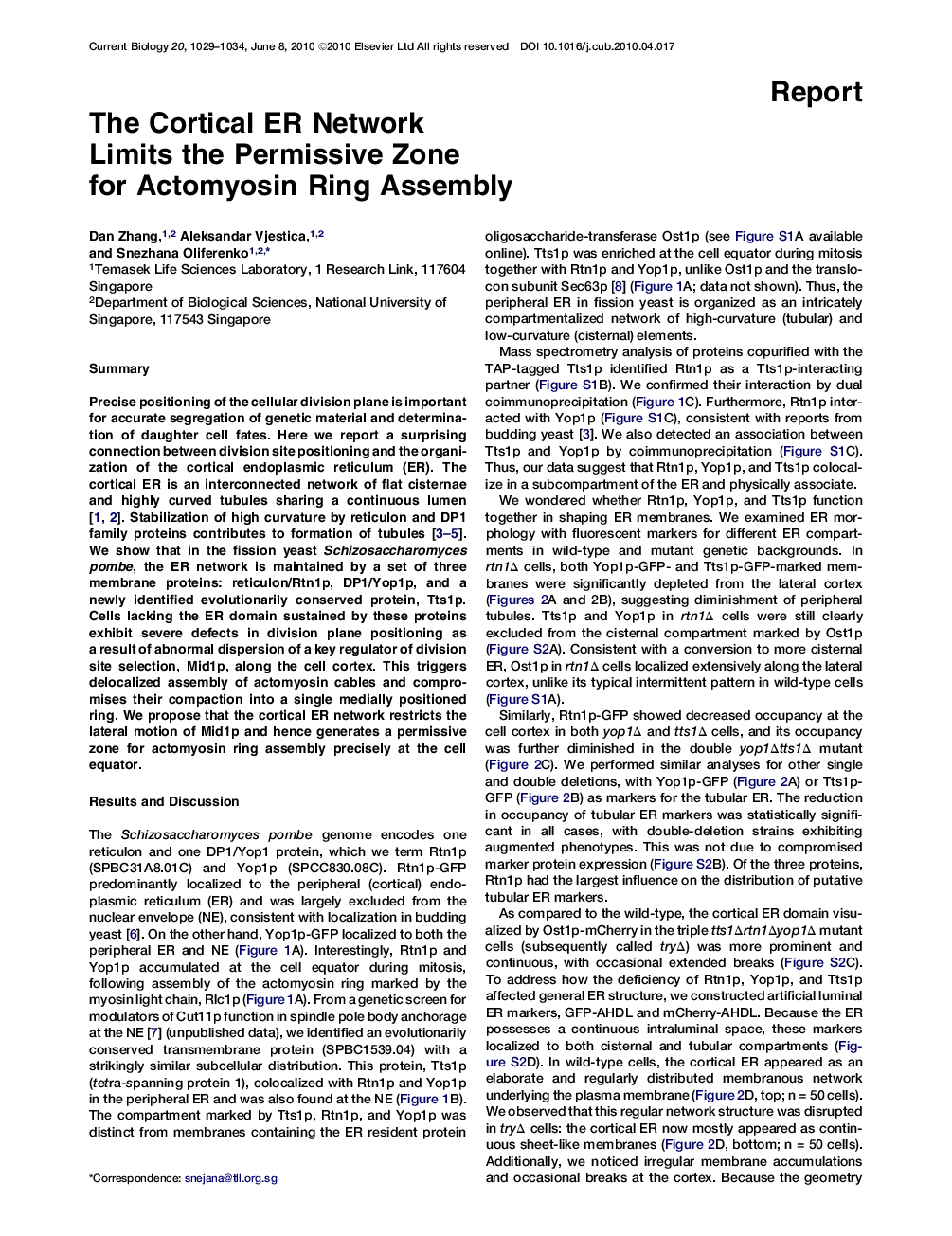| Article ID | Journal | Published Year | Pages | File Type |
|---|---|---|---|---|
| 2042989 | Current Biology | 2010 | 6 Pages |
SummaryPrecise positioning of the cellular division plane is important for accurate segregation of genetic material and determination of daughter cell fates. Here we report a surprising connection between division site positioning and the organization of the cortical endoplasmic reticulum (ER). The cortical ER is an interconnected network of flat cisternae and highly curved tubules sharing a continuous lumen [1 and 2]. Stabilization of high curvature by reticulon and DP1 family proteins contributes to formation of tubules [3, 4 and 5]. We show that in the fission yeast Schizosaccharomyces pombe, the ER network is maintained by a set of three membrane proteins: reticulon/Rtn1p, DP1/Yop1p, and a newly identified evolutionarily conserved protein, Tts1p. Cells lacking the ER domain sustained by these proteins exhibit severe defects in division plane positioning as a result of abnormal dispersion of a key regulator of division site selection, Mid1p, along the cell cortex. This triggers delocalized assembly of actomyosin cables and compromises their compaction into a single medially positioned ring. We propose that the cortical ER network restricts the lateral motion of Mid1p and hence generates a permissive zone for actomyosin ring assembly precisely at the cell equator.
► Rtn1p, Yop1p, and a novel protein Tts1p organize the cortical ER in S. pombe ► Disruption of the cortical ER architecture results in division site mispositioning ► Abnormal cell division is due to dispersion of Mid1p along the cell cortex ► Broadly distributed Mid1p triggers delocalized assembly of actomyosin cables
